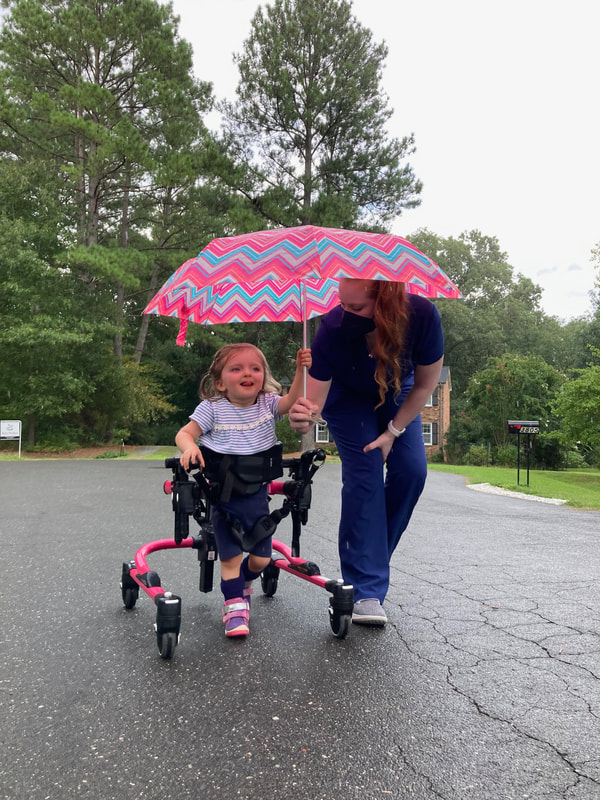Physical Therapy

Physical therapy addresses limitations related to gross motor skills, which are tasks that involve large muscle groups of the body such as sitting, walking, and jumping by working to improve strength, range of motion, balance, and coordination and ultimately help a child improve their ability to participate in physical activity and meet developmental milestones. It focuses on helping children develop the independence and ability to safely access their environment and explore and play with their family and friends. Our physical therapists also help families with the process of attaining appropriate orthotics, prosthetics, and durable medical equipment (DME) including wheelchairs, standers, gait trainers, and much more.
Does My child need PT?
If you happen to notice difficulties in one or more of these areas, an evaluation for treatment may be appropriate:
- Doesn’t like tummy time
- Poor head control while on their stomach or while sitting
- Holds head tilted to one side or only looks in one direction
- Concerns about posture and positioning
- Delays in motor development, such as:
- Not yet sitting by 6 months old
- Not crawling by 10-11 months old
- Not walking by 18 months old
- Walks on toes
- Clumsy/difficulty with balance and coordination
- Falls frequently and/or has trouble stopping falls and protecting their head and face
- Doesn’t skip, jump, or hop on one foot
- Poor endurance/difficulty keeping up and playing with friends
- Sports and non-sports related injuries
Have Q’s? We are here to help
Who can benefit ?
- Brachial plexus injuries
- Brain injuries
- Cerebral palsy
- Children with flat feet
- Club foot
- Coordination and balance challenges
- Dandy-Walker syndrome
- Developmental coordination disorder
- Developmental delay
- Down syndrome
- Fragile X syndrome
- Genetic disorders
- Gross motor delay
- Hydrocephalus
- Imbalances in muscle tone (often called low or high muscle tone)
- Infants born prematurely
- Muscular dystrophies
- Muscle weakness (generalized)
- Neuromuscular disorders
- Plagiocephaly
- Recovery from sports and non-sports related injuries
- Scoliosis
- Spina bifida/tethered cord
- Spinal cord injuries
- Torticollis (head tilt or preference to look to one side)
- Traumatic brain injury
